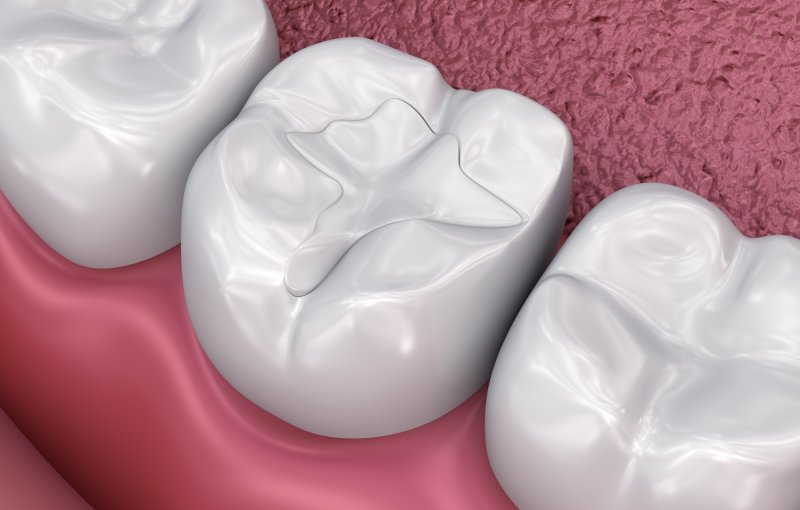
You’ve probably seen those metal fillings you can get when you have a cavity. Maybe you’ve caught a glimpse of one when someone opened their mouth, or maybe you have a few yourself. For a very long time, a metal amalgam filling was the most common way to treat a cavity. However, these have been made largely obsolete by the existence of tooth-colored composite fillings. As the name suggests, these fillings blend in much better with your natural tooth than traditional amalgam. If you’re wondering about the difference between the two, here are a few reasons to pick composite fillings to repair areas of decay.
Amalgam vs. Composite: What’s the Difference?
Both amalgam and composite fillings do the same job: they fill areas of decay in order to protect the sensitive interior of the tooth. The primary difference is in the material the fillings are made of. Amalgam fillings are made of various powdered metals, primarily silver. Composite fillings, on the other hand, are made of acrylic resin mixed with powdered ceramics. For a long time, composite resin couldn’t match the durability of silver. However, recent advancements in oral medicine have made it so that both can last well over a decade if properly maintained.
Why are Tooth-colored Composite Fillings So Much Better?
The most noticeable difference between amalgam and composite fillings is that one is more, well, noticeable. Amalgam keeps its silver color, so if someone can see the tooth that you’ve had treated, it’ll be obvious you’ve had dental work done. Composite resin is much more subtle, as it can be mixed specifically to match the natural color of your tooth.
Silver fillings have also been known to expand in heat and contract in the cold, which can cause a little discomfort when your tooth is exposed to extreme temperatures. Resin is much more stable, so it doesn’t have that problem.
Finally, amalgam fillings can contain ingredients that cause problems in some people. For a long time, amalgam fillings contained mercury, which can lead to heavy metal poisoning. Most modern dentists omit this metal from their amalgam fillings, but some do not. Composite resin doesn’t contain any toxic materials.
There’s a good reason that amalgam fillings have been around for as long as they have: they work. But decades of research have given us materials that make for much better fillings. If you need to repair decay, or you’re looking to replace an existing filling, composite resin is probably the way to go.
About the Author
Dr. Saba Abernethy’s favorite thing about dentistry is being able to connect with her patients. She knows the dentist’s office isn’t everyone’s favorite place to be, so she makes sure that people are comfortable during their procedures. Dr. Abernethy received her Doctor of Dental Medicine from the Boston University School of Dental Medicine, and she completed her residency at the VA Hospital in Togus, Maine. She’s been recognized as a Fellow of the Academy of General Dentistry for her commitment to continuing her education after graduation. If you have any questions about dental fillings, she can be reached at her website or by phone at (508) 429-5300.
